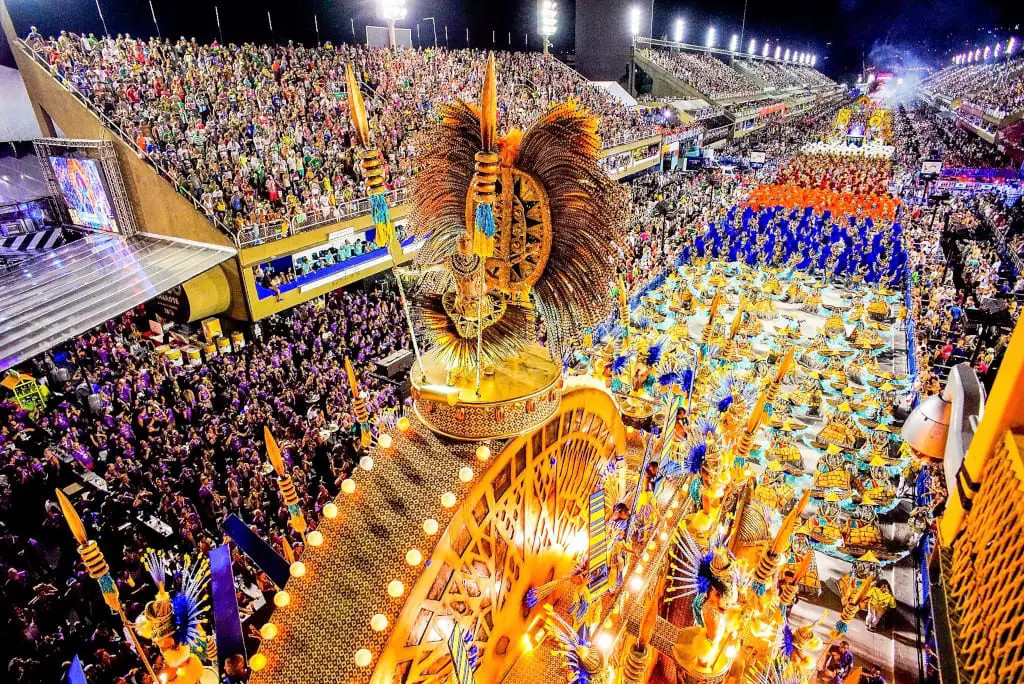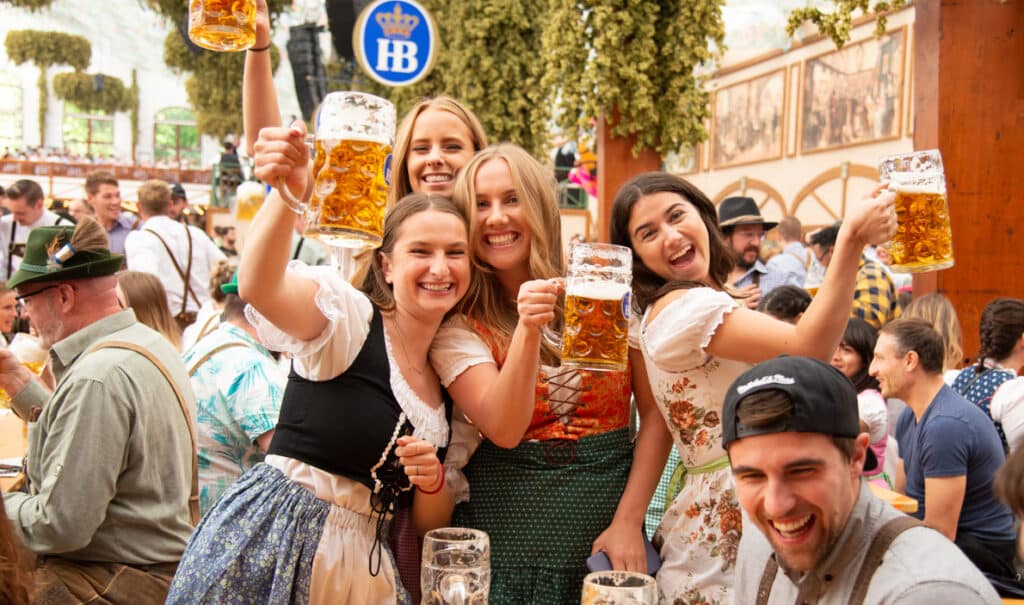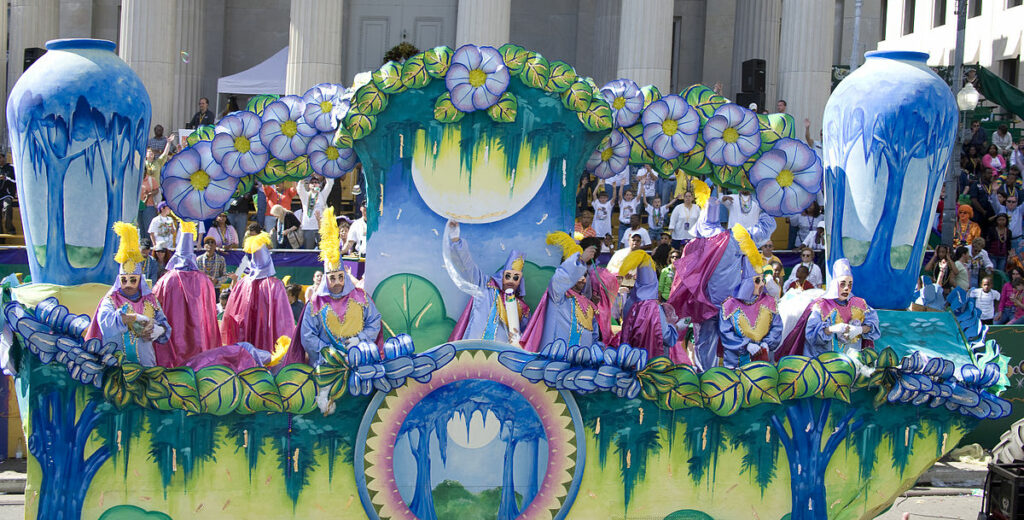In every corner of the world, festivals are the heartbeats of cultures, serving as a potent bridge between the past and the present. They are universal yet intimate, bringing people together to revel in joy, traditions, and communal spirit. The unique customs and vibrant rituals associated with these celebrations underline the beautiful diversity of our world. From the blare of music to the clash of colors, the delicious aromas to the unique rituals, each festival has its own distinctive essence. This exploration of the top 10 most celebrated festivals around the world aims to provide a glimpse into these cultural treasures. Each festival, whether it’s awash in light, color, music, or food, tells a story, embodying the spirit and values of its people and place in the world.
1. Rio Carnival, Brazil

The world’s biggest festival Rio Carnival in Brazil is a breathtaking spectacle that encapsulates the spirit of Brazilian culture. This annual celebration, held before Lent each year, is recognized as the biggest carnival in the world. Over two million people per day take to the streets, immersing themselves in a vibrant blend of music, dance, and dazzling costumes. The festival is renowned for its iconic Samba Parade, where samba schools compete in the Sambodromo, showcasing intricate costumes, choreography, and thematic floats. A standout feature of Rio Carnival is the effervescent energy that permeates every corner of the city, where parties and street performances unfold around every corner. This festival is not just a party but a demonstration of cultural unity and national pride, a rhythmic testament to Brazil’s love for life, music, and dance. For five days, Rio de Janeiro transforms into a city-wide celebration, embracing the spirit of ‘Samba’ and uniting all in a shared joyous revelry.
2. Diwali, India

Diwali, also known as the Festival of Lights, is one of India’s most celebrated festivals. This vibrant event signifies the victory of light over darkness, knowledge over ignorance, and good over evil. For five days, homes, streets, and public spaces across India are adorned with clay lamps (‘diyas’), colorful rangoli (artistic designs made with colored powders and flowers), and vibrant decorations. Fireworks illuminate the night skies, while families gather to share meals, exchange gifts, and offer prayers to deities like Lakshmi, the goddess of wealth and prosperity. Diwali is also marked by the distribution of sweets and the telling of ancient tales that reinforce the festival’s themes. The festival’s pervasive sense of joy, unity, and spiritual reflection transcends geographical and cultural boundaries, establishing Diwali as a truly global celebration.
3. Chinese New Year, China

Chinese New Year, also known as Spring Festival or Lunar New Year, is the most significant celebration in the Chinese calendar. Lasting for 15 days, it marks the beginning of a new lunar year, rooted in the ancient Chinese lunisolar calendar. Each year is associated with one of the 12 animals of the Chinese Zodiac, which dictates many traditions and beliefs. Preparations start weeks in advance, with homes meticulously cleaned to sweep away ill-fortune and make way for incoming luck. Red, symbolizing good fortune and joy, is the dominant color used in decorations and attire. Families gather for lavish reunion dinners, with dishes carrying symbolic meanings of prosperity and longevity. Highlights include parades featuring lion and dragon dances, firecrackers, and the Lantern Festival that marks the end of the New Year period. The event, celebrated worldwide, exemplifies Chinese cultural values of family, unity, and renewal.
4. Holi, India

Holi, famously known as the Festival of Colors, is an exuberant celebration that originates from India but is now celebrated worldwide. It marks the arrival of spring and the victory of good over evil. This vibrant festival is characterized by the throwing of colored powders and water, resulting in a riot of color and high-spirited fun. Traditionally, Holi begins with a bonfire symbolizing the burning of the evil Holika, with participants singing and dancing around it. The following day, known as Rangwali Holi, sees streets, parks, and open spaces transform into arenas of jubilant celebration. Friends, families, and even strangers engage in playful color fights, backed by music, dance, and delectable sweets. Holi also breaks down societal barriers, fostering an atmosphere of inclusivity and camaraderie, which contributes to its appeal and increasing adoption worldwide.
5. Oktoberfest, Germany

World’s biggest festival Oktoberfest is a globally renowned festival that originates from Munich, Germany. Celebrated from late September through the first weekend of October, this 16-18 day folk fest is known for its lively spirit, traditional Bavarian music, delicious German cuisine, and, most famously, the beer. Each year, over six million people from around the globe flock to Munich to partake in the festivities. The history of Oktoberfest dates back to 1810 when it was first held to celebrate the October 12th wedding of Bavarian Crown Prince Ludwig to Princess Therese. The fields where the event took place were named Theresienwiese (“Theresa’s Meadow”) in honor of the Crown Princess, and the festivities have since continued with few interruptions. Today, Oktoberfest is a significant part of Bavarian culture and is replicated in various forms worldwide, symbolizing conviviality, tradition, and the love of beer.
6. Cherry Blossom Festival, Japan

The Cherry Blossom Festival, or “Hanami,” is a cherished tradition in Japan that marks the arrival of spring. Celebrated between late March and early May, this festival centers around the fleeting beauty of the cherry blossoms, known as “sakura.” The timing varies across different regions of Japan, as cherry blossoms bloom at different times. During the festival, friends and families gather in parks and temples for picnics under the cherry blossom trees, appreciating their ephemeral beauty, and reflecting on the transient nature of life. The custom dates back over a thousand years, with the Heian period literature often mentioning these casual flower viewing festivities. At night, the trees are illuminated for “Yozakura,” or “nighttime sakura,” creating a truly magical sight. The Cherry Blossom Festival has become an international spectacle, attracting tourists worldwide and symbolizing renewal, beauty, and the impermanence of life.
7. Day of the Dead, Mexico

The Day of the Dead, or “Día de los Muertos,” is a most celebrated festival in the world throughout Mexico and other Latin American countries. It takes place from October 31st to November 2nd, overlapping with All Souls’ and All Saints’ Day. This unique celebration is not a time of mourning, but a joyous occasion where families gather to remember and honor their deceased loved ones. Elaborate altars, or “ofrendas,” are created in homes and cemeteries, adorned with marigold flowers, favorite foods, and personal belongings of the departed. The air is filled with the scent of burning copal incense, believed to guide the spirits back to the world of the living. Skull motifs are prevalent, particularly sugar skulls (“calaveras”), which are often personalized and given as gifts. Parades, music, and traditional foods, like pan de muerto (bread of the dead), are also integral parts of the festivities. The Day of the Dead is a heartfelt celebration of life and death, demonstrating that love and remembrance transcend mortality.
8. Eid al-Fitr, Worldwide

Eid al-Fitr, meaning “Festival of Breaking the Fast,” is a significant religious celebration observed by Muslims worldwide, marking the end of Ramadan, the Islamic holy month of fasting. This joyous occasion, which falls on the first day of Shawwal (the 10th month of the Islamic lunar calendar), involves a special prayer at the mosque, followed by a festive meal— the first daytime meal Muslims have had in a month. The day is filled with feasting, gift-giving, and charity, as it is customary to give to the less fortunate before the Eid prayer, known as “Zakat al-Fitr.” This celebration is not only a time for spiritual reflection but also a time for family and community. Traditions may vary from country to country, but the essence remains the same— expressing gratitude to Allah, sharing with others, and rejoicing in the spirit of Eid.
9. La Tomatina, Spain

La Tomatina is one of the most unique and vibrant festival in the world, celebrated in the small Valencian town of Buñol, Spain. This exuberant event, held on the last Wednesday of August each year, attracts thousands of people from all corners of the world. Participants engage in an epic food fight, where over-ripe tomatoes are hurled in the streets in a display of harmless fun and sheer joy. Originating from a spontaneous brawl in 1945, the festival now serves as a significant tourist attraction. Preceded by a week of parades, fireworks, and cooking contests, the tomato-throwing day is the pinnacle event. Despite lasting just an hour, the town gets drenched in a sea of tomato pulp. La Tomatina symbolizes the Spanish zest for life and love for celebrated worldwide, showcasing the country’s penchant for unusual, yet vibrant festivals.
10. Mardi Gras, USA

Mardi Gras, also known as Fat Tuesday, is a world’s biggest festival that embodies the vibrant and lively spirit of New Orleans, USA. Taking place annually on the day before Ash Wednesday, it marks the final day of indulgence before the beginning of the Lenten season. The city erupts into an exhilarating carnival of music, parades, picnics, floats, and excitement. Revelers adorn themselves in vibrant costumes and masks, throwing beads and trinkets into the cheering crowd. Highlights include numerous parades featuring elaborate floats created by ‘krewes’, the social organizations responsible for the event’s organization. Many of these parades have unique themes and traditions, contributing to the festival’s overall spectacle. Mardi Gras is not only a major cultural event for New Orleans, but it also attracts tourists from around the world, showcasing the city’s culture, creativity, and community spirit.
Conclusion
These most celebrated Festivals in the world are more than just an occasion for celebration; they are a reflection of our human need for connection, joy, and cultural expression. From the riotous colors of Holi and the lantern-lit skies of Diwali, to the somber beauty of Day of the Dead and the vivacious energy of the Rio Carnival, each of these festivals offers a unique window into diverse cultures. They remind us that despite our differences, we all share the universal language of celebration. As we step into a post-pandemic world, the anticipation for these world’s biggest festivals is greater than ever. They offer hope, unity, and an opportunity to come together in shared experiences, embodying the spirit of humanity at its most exuberant.


